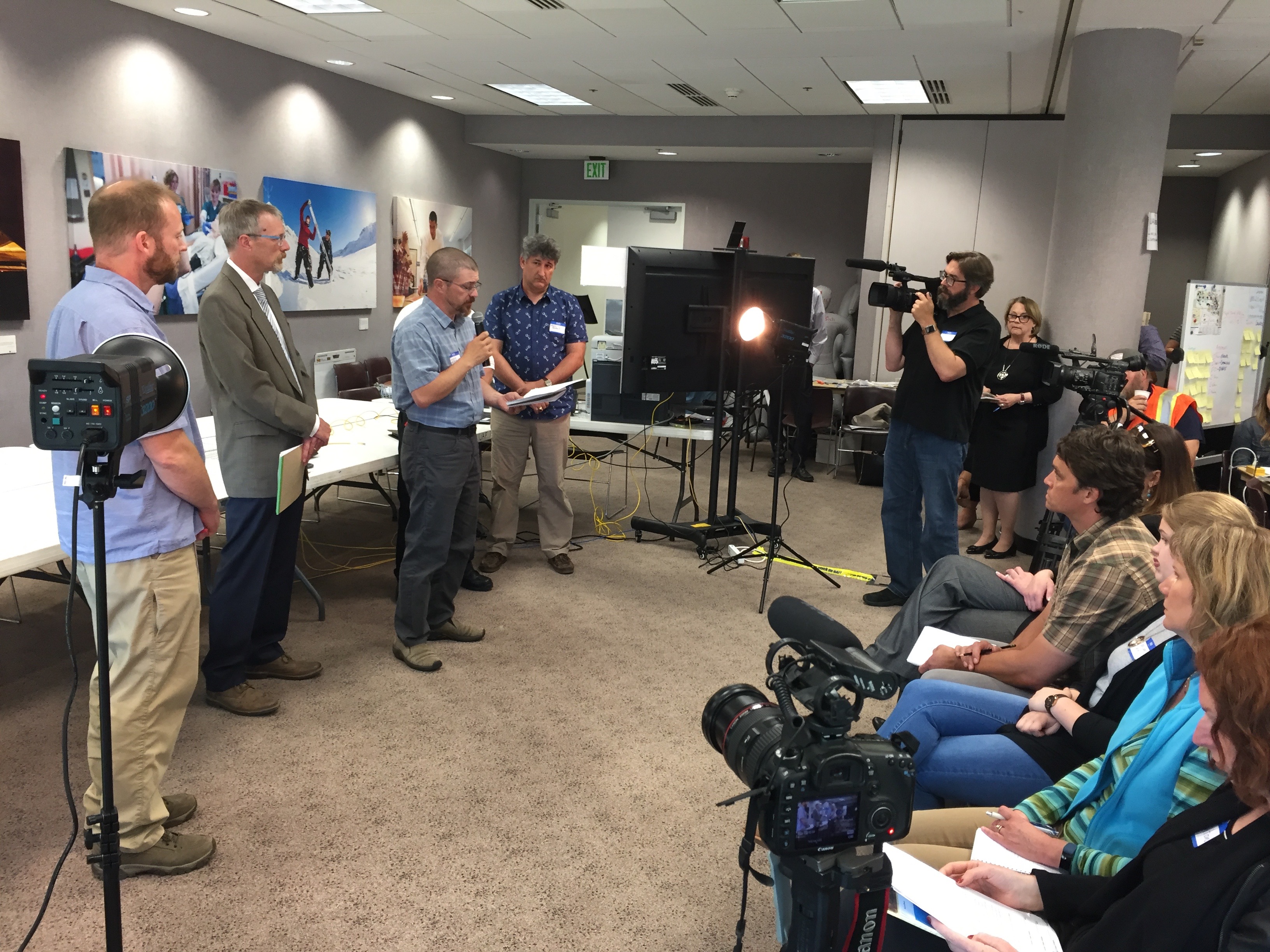
Multi-agency emergency response training exercise held on UAF campus
Every day the University of Alaska system and Alaska communities face potential threats from natural causes like earthquakes, tsunamis and ice storms, or human threats such as pandemic illnesses, cyber-terrorists or violent intruders. A lack of preparation could have catastrophic consequences. Effective emergency management and incident response requires that we create a culture of preparedness.
On June 26 Alaska universities put their preparations to the test when they hosted a multi-agency intensive exercise involving 90 participants, including all three universities and statewide executive staff and representatives from the State of Alaska Virology Lab, National Weather Service, Alaska National Guard, State of Alaska, Department of Homeland Security and Fairbanks North Star Borough. The scenario involved a massive earthquake causing major destruction, casualties, system failures and increasingly dangerous after-effects designed to push participants to test preparations, action plans, inter-agency coordination and the involvement of senior leadership across multiple agencies. Training exercises like this are part of a national response system and are vital to the safety and health of university communities.�
This exercise was conducted within the National Incident Management System (NIMS), a single, comprehensive approach for agencies to prepare for and coordinate operations during any type of event. NIMS enables federal, state, tribal and local governments, nongovernmental organizations, schools (including UA) and the private sector to work together with common terms and protocols in order to reduce the loss of life and property and harm to the environment from incidents of all types regardless of cause, size, location or complexity. Any organization that receives federal funding is mandated to adopt and train in the NIMS system, which was created by Homeland Security Presidential Directive 5 (HSDP-5).
The university system actively participates in local and state preparations and training exercises, and will continue to work on refining our emergency response plans and capabilities. While practice alone cannot reduce the devastation of a potential massive earthquake or other disaster, training for the anticipation of such an event has proven to make a significant difference in how effectively we respond and recover.
/ua-templates/version3/images/swbanner/swlogo-hz.png)

/ua-templates/version3/images/swLogo.gif)